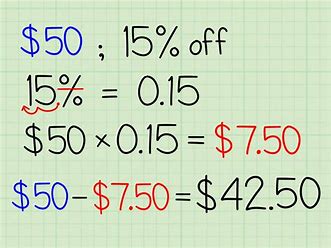How to Calculate Percentage
Unlocking the Power of Percentages: Essential Concepts for Everyday Life
Calculating percentages is a fundamental mathematical skill used in various contexts, from academic studies to financial analysis and everyday tasks. Understanding how to calculate percentages allows individuals to interpret data, make informed decisions, and communicate information effectively. To compute a percentage, you divide a part by the whole and then multiply the result by 100. This process is often expressed as the formula: Percentage = (Part/Whole) * 100.
Firstly, let's delve into the basic concept of percentages. Percentages represent parts of a whole in terms of hundredths. For instance, if you have a pie divided into 100 equal slices, each slice represents 1% of the whole pie. This foundational understanding is crucial for grasping more complex percentage calculations.

Next, it's essential to comprehend the different types of percentage problems. There are three main types: finding the percentage of a number, finding the part given the percentage and the whole, and finding the whole given the part and the percentage. Each type requires a slightly different approach but relies on the same fundamental principle of dividing and multiplying.
Understanding Percentages Facilitates Budgeting and Financial Planning
Next, it's essential to comprehend the different types of percentage problems. There are three main types: finding the percentage of a number, finding the part given the percentage and the whole, and finding the whole given the part and the percentage. Each type requires a slightly different approach but relies on the same fundamental principle of dividing and multiplying.
Conversely, to find the part given the percentage and the whole, you multiply the percentage by the whole and then divide by 100. For instance, if you know that 15% of a group of students are athletes out of a total of 200 students, you would multiply 15 by 200 and then divide by 100 to find that there are 30 athlete students.
Finally, to find the whole given the part and the percentage, you divide the part by the percentage and then multiply by 100. For example, if you know that 25 out of 50 questions were answered correctly, which represents 50%, you would divide 25 by 50 and then multiply by 100 to find that the total number of questions is 50.
Conclusion
In conclusion, mastering the calculation of percentages is indispensable for various applications in daily life, academia, and professional fields. By understanding the fundamental principles and different types of percentage problems, individuals can interpret data accurately, make informed decisions, and communicate effectively in diverse contexts. With practice and proficiency in percentage calculations, individuals can enhance their problem-solving skills and analytical abilities, contributing to their overall success and confidence in mathematical reasoning.
Most Read
.jpg)
Lorem ipsum dolor sit amet consectetur adipisicing elit. Similique!
.jpg)
Lorem ipsum dolor sit amet consectetur adipisicing elit. Similique!
.jpg)
Lorem ipsum dolor sit amet consectetur adipisicing elit. Similique!
.jpg)
Lorem ipsum dolor sit amet consectetur adipisicing elit. Similique!









Leave a Reply
your email address will not be published. required fields are marked *